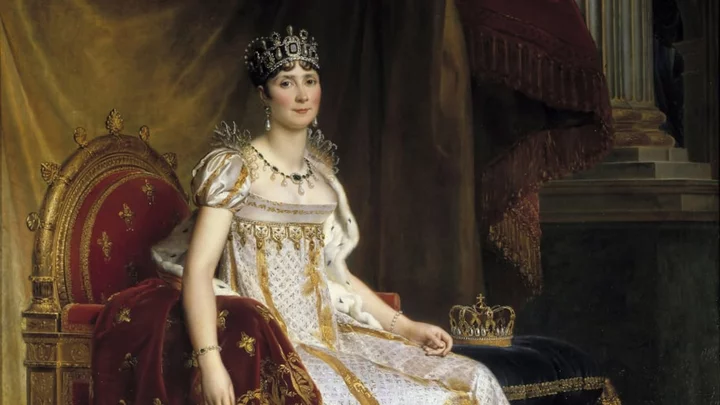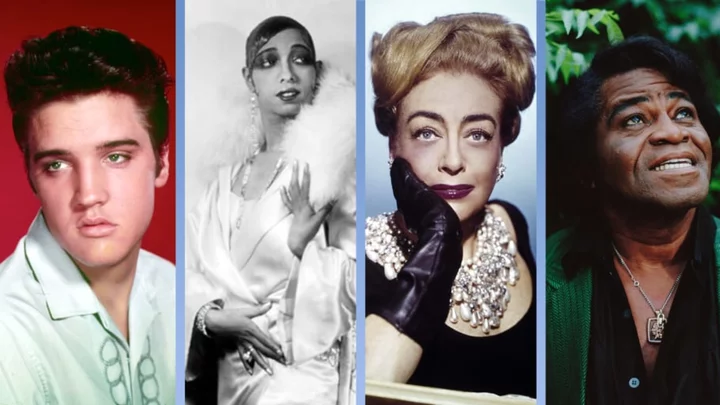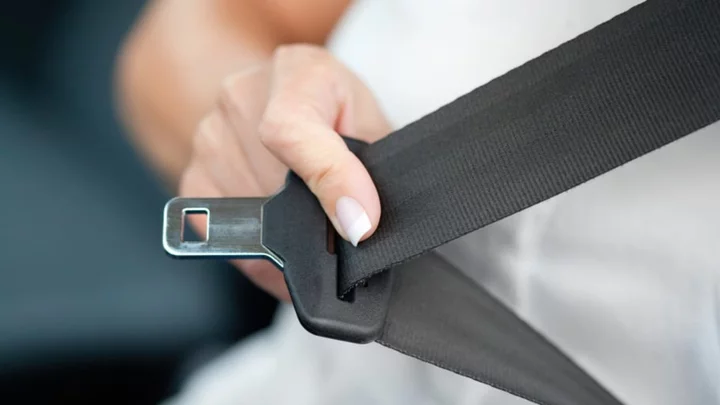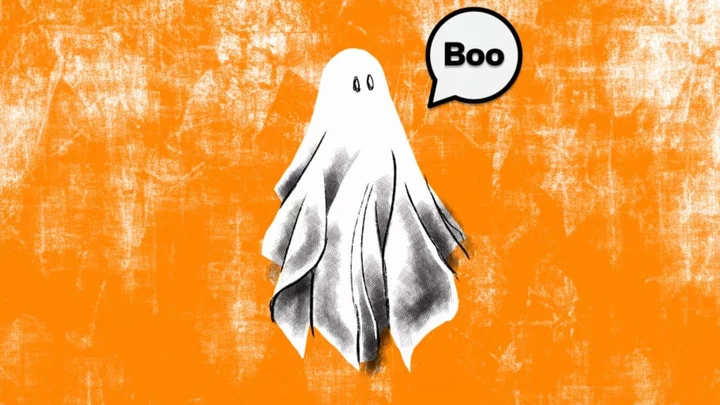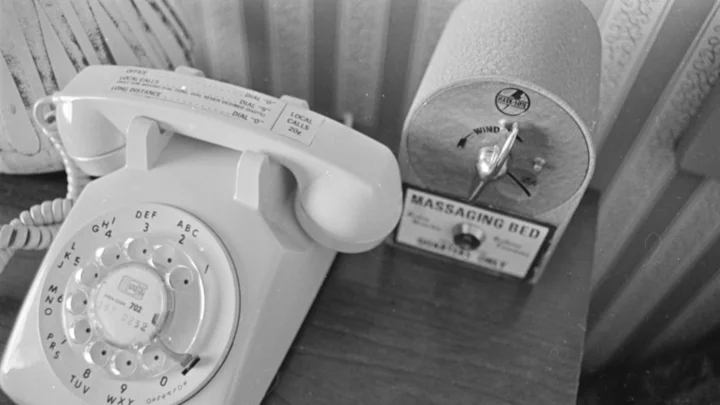Joséphine de Beauharnais and Napoleon Bonaparte’s relationship is the stuff of legends. But before they met, de Beauharnais experienced significant hardship. Even after she married Napoleon—her second husband—her life was far from a fairytale.
Ahead of the release of Ridley Scott’s biopic Napoleon, here are 11 facts about Joséphine de Beauharnais, the woman who, for 14 years, stood in the emperor’s shadow.
1. Joséphine de Beauharnais was almost born British.
Joséphine’s family owned sugar plantations in tiny Martinique, a French colony in the Caribbean Sea. The French and British had been fighting for control over the island as part of the Seven Years War, with the British seizing control of Martinique in 1762. The conflict between the two countries ended with the 1763 Treaty of Paris, which saw Martinique pass back to French ownership just four months before Joséphine was born.
2. The name Joséphine de Beauharnais never existed—at least not within her own lifetime.
Joséphine was the eldest child of Joseph Tascher de La Pagerie, a gambler who squandered the family’s wealth. Born Marie-Joseph-Rose on June 23, 1763, her family knew her as Yeyette, and in adulthood she was known simply as Rose or Marie-Rose. When she married Alexandre, Viscount of Beauharnais in 1779, she became Vicomtesse de Beauharnais.
It was Napoleon who preferred to call her Joséphine, and shortly after meeting him she became Joséphine Bonaparte. Joséphine de Beauharnais is a conflation of her lifetime names that history bestowed in retrospect.
3. She was a widow before she met Napoleon.
Joséphine’s marriage to Alexandre was arranged by their two families—she was only 16 when she sailed to France to meet her new husband. Alexandre showed little interest in his bride; by all accounts, his motivations in marrying her were social expectation and to facilitate access to his inheritance. After being unimpressed with attempts to educate her, he left in favor of his mistress, Laure de Longpré, who bore him a child. Alexandre got his comeuppance when he met the guillotine during the Reign of Terror.
4. Joséphine had two children with Alexandre, Viscount of Beauharnais.
Though Joséphine’s marriage to Alexandre was not a happy one, it was still fruitful: the couple had two children, a son and daughter. After their separation, their daughter, Hortense (born April 10, 1783), stayed with Joséphine while their son, Eugène (born September 3, 1781), eventually went to live with Alexandre. Both children stayed close to their mother throughout her life.
Napoleon was fond of his stepchildren, treating them like his own, and Eugène often accompanied him on his military campaigns. When Joséphine’s relationship with Napoleon was floundering, she encouraged a marriage between Hortense and Napoleon’s brother Louis, in no small part to stabilize her own situation. The union made Joséphine a mother-in-law to her brother-in-law, and when Louis became King of Holland, Hortense became Queen.
5. Joséphine changed her birthdate on their marriage certificate to seem closer in age to Napoleon.
After a brief courtship, Napoleon and Joséphine married on March, 9, 1796, in the town hall of Paris’s 2nd Arrondissement. It was a rushed affair, to which Napoleon arrived two hours late. Joséphine was 32, he was 26; the age difference famously led them both to alter their birthdates on the marriage certificate so they would appear of a similar age. Joséphine subtracted four years, and Napoleon added 18 months.
6. Joséphine had in-law trouble from the start.
The Bonaparte family took an immediate dislike to Joséphine. As an older woman with children, they didn’t think she was a suitable match for Napoleon. Her immodest, spendthrift nature was counter to their ideals of a frugal, family-oriented woman and they found her social ease and sophistication threatening. Throughout her relationship with Napoleon, her in-laws conspired to get rid of her, and were happy when the couple finally separated.
7. Joséphine married Napoleon twice.
Unsatisfied with the secular proclamation that saw him become Emperor Napoleon I in May 1804, Napoleon desired an additional religious consecration. However, Pope Pius VII baulked at the thought of an imperial couple who, by not having had a religious ceremony, were cohabiting in sin. He insisted they make the marriage official by undertaking religious vows first, which they speedily took on December 1, 1804—the day before their coronation.
8. Napoleon crowned Joséphine Empress himself.
The coronation took place at Notre-Dame cathedral on December 2, 1804, in the presence of Pope Pius VII, with a carefully planned ceremony. For Napoleon, there was a trade-off between having the Pope’s blessing and showing that his status was being granted by the will of the people: rather than having the Pope perform their coronation, Napoleon crowned himself. He then placed Joséphine’s crown first on his own head, and then on hers. Through Napoleon, Joséphine became Empress of the French and Queen of Italy.
9. Joséphine may have been infertile by the time she married Napoleon.
On numerous occasions, Joséphine attempted to counter her infertility by traveling to Plombières-les-Bains, a thermal spa town in eastern France where the waters were long-renowned for their healing properties. Despite this, she did not conceive a child with Napoleon. The exact cause of her infertility is unknown, but according to some historians, it’s possible that years of using toxicity-laden make-up and contraceptive douches could have been a factor. The couple’s lack of a legitimate heir—Napoleon successfully conceived at least one child from his affairs—led to the annulment of their marriage in 1810.
10. Joséphine had several brushes with death.
In 1788, Joséphine returned to her home island, Martinique, ostensibly to see her aging mother, and likely motivated to flee from the debts and scandal she accrued due to her many affairs at court. She narrowly dodged a cannonball on her way to the ship after burgeoning social unrest in Martinique caused her to flee back to France.
Her troubles were not over back in Terror-struck Paris. In 1794, after her brother-in-law was imprisoned for his royalist sympathies, Alexandre and then Joséphine herself followed in close succession. Alexandre was unjustly found guilty and taken to meet the guillotine. Joséphine would have followed, were it not for a twist of fate. Within days of Alexandre’s execution, the regime was toppled, the Reign of Terror ended, and Joséphine was among the many prisoners released.
She even experienced an ordinary outing that turned almost deadly. In 1798, Joséphine was visiting Plombières-les-Bains when she and her entourage were beckoned to the first-floor balcony by a maid who had witnessed something of interest outside. They all fell when the balcony collapsed under their combined weight. Joséphine was left temporarily unable to walk with terrible back pains and a suspected broken pelvis.
Her husband’s career didn’t help either. In 1800, Napoleon was First Consul of the French Republic, a position that brought with it many enemies. On Christmas Eve, a failed assassination attempt took place while he was traveling in a carriage to the opera. Napoleon was unscathed, but Joséphine’s carriage was damaged, injuring her daughter and bystanders.
Joséphine met her eventual untimely end when she was only 51, at her home in Chateau de Malmaison. She caught a cold and refused to rest, maintaining her social engagements. Joséphine then developed a fever and got progressively sicker in just a matter of days. She died on May 19, 1814.
11. Joséphine is entombed next to her daughter.
Joséphine lay in state for three days so the grieving public could pay their respects. On June 2, 1814, a somber procession witnessed by thousands took her to her final resting place in the Church of Saint-Pierre-Saint-Paul. Hortense and Eugène commissioned a sculptor to create a statue of their mother, which they installed there in her memory. Hortense requested to be buried next to Joséphine after her death; she was placed there after she died in 1837 at age 54.
This article was originally published on www.mentalfloss.com as 11 Facts About Joséphine de Beauharnais.

